The 15th Gwangju Biennale Japan Pavilion
2024.12.1会期終了しました。
ABOUT
福岡市はアジアに近い地理的特性から、古くからアジアとの交流の玄関口としての役割を担ってきた歴史を持ちます。そのような中で、アジアの近現代の美術作品を系統的に収集・展示する唯一の美術館として福岡アジア美術館を1999年に開館させ、現代アートを介してアジアとの交流を重ねてきました。今年で25周年を迎える福岡アジア美術館では開館当初より、アーティスト・イン・レジデンスプログラムを行い、韓国をはじめとするアジアのアーティストを数多く受け入れ、紹介してきました。
2022年にはこれまでの取組みをさらに発展させ都市の成長に結びつけていくため「Fukuoka Art Next(FaN)」事業を開始しました。FaN 事業では、アーティストの成長・交流拠点 Artist Cafe Fukuoka の開設のほか、Fukuoka Art Award、官民共同開催で開催する「ART FAIR ASIA FUKUOKA (AFAF)」、FaN Week におけるまちの中での作品展示など、「アートとともに成長する都市」を目指し、さまざまな取り組みを実施しています。
その中でも2022年9月にオープンしたArtist Cafe Fukuokaでは、アーティスト支援の一環として、アーティストがよりグローバルな場所で活躍ができるよう海外展開事業を行なっており、アーティストや国際社会との強いつながりをより積極的に推進し、都市としての成長を目指しています。
今回、光州ビエンナーレは30周年を迎える記念すべき年として開催され、パビリオンには過去最大規模の30を超える国や都市などが参加します。
そのような中で、韓国から非常に近い距離で、アジアとの現代アートを通じた交流を行なう福岡市に日本パビリオンのスタートとして声をかけていただきました。
福岡としてもACFにおける海外展開事業の一つとして、国際美術展へ出展することはアーティストの成長支援になることはもとより、今後の現代アートを通じたアジアとの交流に大きく貢献していく契機となることを期待しています。
今回参加するアーティストの内海昭子、山内光枝は、福岡市を拠点に国内外で活躍しています。そしてこの展覧会は批評家で文化研究者である山本浩貴がキュレーションをします。山本はかつて光州のAsia Cultural Center (ACC)でリサーチフェローを経験しており、内海、山内もそれぞれ韓国での展示や制作発表を行うなど韓国の地とのつながりを持つアーティストでもあります。
本展では、コンセプトに「私たちには(まだ)記憶すべきことがある」を掲げ、光州の地に歴史的に埋め込まれた無数の声と沈黙に耳を傾けながら、その一方、現在進行形で生起しているグローバルな事象に接続する回路を開くことも目指した展覧会となっています。
本展での作品展示にあたり、アーティストたちは光州市内を何度も訪れ、多くの人と出会い、現地の方々のサポートを得ながら作品制作を行ってきました。
今後もこのような境界を超えた取り組みを継続し、さまざまな人々と未来をともに描くことのできるコミュニティを広げていく機会となることを願っています。
Fukuoka city will be participating in the 15th Gwangju Biennale as the Japan Pavilion. This event will be held in Gwangju, South Korea, from September 7 to December 1, 2024.
Fukuoka City has been engaging in exchanges with Asia through contemporary art since the opening of the Fukuoka Asian Art Museum in 1999, and launched the Fukuoka Art Next (FaN) project in 2022. In addition to opening the Artist Cafe Fukuoka to support the exchange and growth of artists, the project also implements various programs such as the Fukuoka Art Award, art fairs, and city-wide art exhibitions, with the aim of becoming a “city that grows with art.”
The Gwangju Biennale is an international exhibition of contemporary art held every two years, representing Asia. This year marks its 30th anniversary, with Nicolas Bourriaud, a curator and art critic known for his “Relational aesthetics,” serving as artistic director. The biennale will include the main venue and national pavilions, making it the largest to date. This will be Fukuoka City’s first participation in the Japanese Pavilion.
The Japanese pavilion will be held at two venues in Gwangju and curated by critic and cultural researcher Hiroki Yamamoto. Titled“We (Still) Have Things to Remember,” the exhibition aims to establish connections with current global events while acknowledging the myriad voices and historical silences embedded in the land of Gwangju. Fukuoka-based artists Akiko Utsumi and Terue Yamauchi, active both domestically and internationally, will present new works for this exhibition.
We also hope to use this opportunity to actively promote exchanges with the world. To exhibit their works in this exhibition, the artists have visited Gwangju many times, met many people, and created their works with the support of local people. We aim to continue these boundary-
crossing initiatives in the future and expand the community where we can jointly envision the future with diverse individuals.
OVERVIEW
名称/Title:
第15回光州ビエンナーレ 日本パビリオン 「私たちには(まだ)記憶すべきことがある」
The 15th Gwangju Biennale Japan pavilion “We (Still) Have Things to Remember”
開催期間/Dates:
2024.9.7(Sat)-12.1(Sun)
September 7, 2024 – December 1, 2024
時間/Hours:
10:00-18:00 両会場とも(最終入場17:30/Admission until 30 minutes before closing time)
休館日/Closed:
両会場ともに月曜日
Every Monday
料金/Price:
入場無料
Admission is free
会場/Venue
大韓民国 光州市東区西石路89
Address: 89 Seoseok-ro, Dong-gu, Gwangju, The Republic of Korea
大韓民国 光州市東区長洞路1-6
Address: 1-6 Jangdong-ro, Dong-gu, Gwangju, The Republic of Korea
オーガナイザー/Organizer:
福岡市 Fukuoka Art Next (FaN)
Fukuoka City Fukuoka Art Next (FaN)
ホスト/Host:
光州ビエンナーレ財団、光州市役所
Gwangju Biennale Foundation
Gwangju Metropolitan City
助成/Support:
公益財団法人 野村財団、公益財団法人 小笠原敏晶記念財団
Nomura Foundation, Ogasawara Toshiaki Memorial Foundation
キュレーターステートメント/Curator Statement
私たちには(まだ)記憶すべきことがある
戦後、冷戦の最中、朝鮮半島の人々は数々の苦難を経験した。
1980年代の光州抗争をはじめ、光州は権力と格闘する民衆の抵抗の舞台となり、それゆえ、この土地で幾多の尊い命が失われた。この抗争に関して言えば、市民を虐殺した冷戦期の米国拡張政 策や韓国軍事独裁は、戦時期の日本植民地主義と地続きの連鎖 をなしていることを忘れてはならない。こうした歴史的背景に も由来して、光州には時の勢力に対し、けっして黙さない気風が受け継がれてきた。だが、沈黙を破って発せられた人々の声は、しばしば権威により抑圧された。そして、そうした声の大部分は歴史のなかで周縁化され、再びの沈黙を強いられた。
声を奪われた声、沈黙の牢獄に閉じ込められた沈黙。たくさんの声、たくさんの沈黙。朝鮮の伝統文化を形成する「恨」は、日本語で同じ漢字を用いる「恨み」ではなく、「声にならない声」を表す概念である。声と沈黙の不可視的な存在を捉える感性――現代の世界に生きる私たちは、そうした感性を育む必要がある。光州抗争の忘却に抗議して焼身自殺を図った弟の遺志を継いだ朴來郡は、権力と格闘して命を落とした人々を主役に据え、『私たちには記憶すべきことがある』を執筆した。この本は、韓国研究を専門とする真鍋祐子の手で翻訳され、広く日本でも読まれるようになった。
内海昭子と山内光枝を招聘し、本パビリオンは「(複数の)声と沈黙の想起」をテーマに構成される。芸術制作を通して光州の地に歴史的に埋め込まれた無数の声と沈黙に耳を傾けながら、その一方、現在進行形で生起しているグローバルな事象に接続する回路を開くことも目指す。今も世界中で暴力の連鎖が継続され、かき消されている小さな声がある。さらにナショナルな歴史、その絡み合いが構成するトランス・ナショナルな歴史の忘却に抗うと同時に、芸術的な想像力が喚起するポスト・ナショナルな未来の展望――「暗闇のなかの希望」(レベッカ・ソルニット)――も示そうと試みる。
インスタレーションの手法を用いて、内海昭子は時間性を内包 するイメージの空間を生成してきた。内海は作品を通して鑑賞 者の知覚や経験に緩やかに介入し、現在と接合された過去や未 来の時間を想起することを促す風景を創出する。
本パビリオンで内海は「音」と「連鎖」に焦点を当て、長短様々な金属棒が回転し、連鎖的に触れ合うことで空間に鳴り響く音が紡ぎ出されるインスタレーションを制作する。古来、朝鮮では訴えの際に楽器などを使って音を発し、自らの声に人々の意識を向かせたという。そうした声は時間と空間を超越して集合的な連なりを形成することで、時に大きな物事を動かす原動力となった。
その一方、聴き取られなかった無数の声は暴力の連鎖の只中 でかき消され、「恨」の連鎖となって歴史の地層のなかにひっそりと堆積した。本作を通して内海が表象するのは、歴史における「音」と「連鎖」の両義的で、簡単には言い表すことのできない側面である。
山内光枝の芸術実践は、ある場所やそこに暮らす人々と「共にいる」ことを不可欠な要素として含む。そうした場所や人々の固有性を起点として、山内は作家独自の目線を通して浮かび上がる世界を主に映像を使って表現する。しばしば山内は特定の主題を事前に想定せずに制作の過程を始め、自身がある種の「うつわ」となることによって、その土地を流れる特異な、しかし不可視化された気配を取り込む。本パビリオンにおいて山内が捉えようとするのは、沈黙という名の声なき声である。山内は沈黙に言葉を与える代わりに、作品のなかで沈黙を沈黙のままに存在させることを試みる。「光州」と同じく、自身の名に「光」の字が含まれていることに奇妙な縁を感じていると山内は語る。本作で山内は声なき声で語る生命に耳を傾け、表裏一体で地続きとなっている光と闇の揺らぎと反転、それらのあいだにある境界の消失を前景化しようとしている。 ナショナルな、トランス・ナショナルな、ポスト・ナショナルな歴史と、そのなかで生起する過去の、現在の、未来の出来事――まだ、私たちには記憶しなくてはならないことが残されている。
日本パビリオン・キュレーター 山本浩貴
We (Still) Have Things to Remember
In the post-war period, at the height of the Cold War, the people of the Korean Peninsula experienced many hardships, including the Gwangju Uprising of the 1980s. Gwangju has become a stage for people’s resistance against power, and thus many precious lives have been lost in this place. In relation to the uprising, it must not be forgotten that U.S. expansionist policies and the Korean military dictatorship during the Cold War, which resulted in the massacre of a large number of civilians, were a chain-like continuation of Japanese colonialism in the wartime
period. Against this historical background, Gwangju has inherited a spirit of never being silent toward the hegemonic forces of the time. However, the voices of those who broke the silence were often suppressed by the authorities. Most of these voices were marginalized in history and forced to be silenced once again.
Voices deprived of voice, silence trapped in a prison of silence.Many voices, many silences. The word han, which forms an integral part of traditional Korean culture, does not simply mean “resentment,” although it uses the same Chinese character in Japanese, but also contains a conception of “a voice that cannot be articulated as a voice.” A sensitivity to the invisible presence of voices and silences – we who live in today’s world are required to cultivate such a sensitivity. Park Lae-gun, following in the
footsteps of his younger brother who burned himself to death in protest against the oblivion of the Gwangju Uprising, authored We Have Things to Remember. In this book, those who lost their lives in the struggle against power are set as the main characters.
The book was translated by Yuko Manabe, a specialist in Korean studies, and was widely read in Japan.
Inviting Akiko Utsumi and Terue Yamauchi, this pavilion will be organized around the theme of “Remembering (Plural) Voices and Silences.” While listening to the myriad voices and silences historically embedded in Gwangju through the creation of art, the pavilion also aims to open a circuit connecting to current global phenomena, as there are still small voices being drowned out by the ongoing chain of violence around the world.Furthermore, while resisting the oblivion of national histories and the trans-national histories that their entanglement constitutes,
it also attempts to present a vision of a post-national future –namely, “hope in the darkness” (Rebecca Solnit) – evoked by the artistic imagination.
Using the method of installation, Akiko Utsumi has produced a space of images embracing temporality. Through her works, Utsumi intervenes in the viewer’s perception and experience,generating a landscape that encourages the viewer to recall past and future times connected with the present. For this pavilion,Utsumi focuses on “sound” and “chain” to create an installation in which metal rods of varying lengths rotate and touch each other in a chain, spinning out sounds that resonate in the space.
In ancient times, the Korean people used, for instance, musical instruments to make sounds to draw people’s attention to
their own voices when they wanted to be heard. Such voices transcended time and space to form a collective chain, and at
times became the driving force that made significant changes.On the other hand, the countless voices that went unheard were
drowned out in chains of violence,constituting a chain of han that quietly accumulated in the strata of history. What Utsumi represents in this work is the ambivalent and elusive aspects of “sound” and “chain” in history.
Terue Yamauchi’s artistic practice involves “being together with” a place and its inhabitants as an indispensable element.
Taking the singularity of these places and people as a starting point, Yamauchi represents the world that emerges by way of
the artist’s unique perspective, mainly through the use of video.
Yamauchi often begins the process of creation without a specific subject in mind, and by becoming a kind of “vessel” herself, she seizes the peculiar, yet invisible,atmosphere that flows through
a particular place. In this pavilion, Yamauchi tries to capture the voiceless voice of silence. Instead of giving words to silence,Yamauchi attempts to make silence exist as it is in her work.Yamauchi says that she feels a strange connection with the character for “light” in her first name, which is the same as in
“Gwangju.” In this work, Yamauchi listens to the life that speaks in a voiceless voice, and attempts to foreground the fluctuation and
reversal of light and darkness, which are inextricably linked, as well as the disappearance of the boundary between them.
National, transnational, and post-national histories and the past,present, and future events that occur within them – still, there are
things left for us to remember.
Curator
Hiroki Yamamoto
山本 浩貴 /Hiroki Yamamoto
文化研究者、アーティスト。1986年千葉県生まれ。一橋大学社会学部卒業後、ロンドン芸術大学にて修士号・博士号取得。2013~2018年、ロンドン芸術大学トランスナショナルアート研究センター博士研究員。韓国・光州のアジアカルチャーセンター研究員、香港理工大学ポストドクトラルフェロー、東京藝術大学大学院国際芸術創造研究科助教を経て、2021年より金沢美術工芸大学美術工芸学部美術科芸術学専攻講師。単著に『現代美術史 欧米、日本、トランスナショナル』(中央公論新社、2019年)、『ポスト人新世の芸術』(美術出版社、2022年)、共著に『トランスナショナルなアジアにおけるメディアと文化 発散と収束』(ラトガース大学出版、2020年)、『レイシズムを考える』(共和国、2021年)、『東アジアのソーシャリー・エンゲージド・パブリック・アート 活動する空間、場所、コミュニティ』(ベーノン・プレス、2022年)、『新しいエコロジーとアート まごつき期」としての人新世』(以文社、2022年)など。
Hiroki Yamamoto, born in Chiba in 1986, is Lecturer at Kanazawa College of Art in Japan. Yamamoto graduated in Social Science at Hitotsubashi University, Tokyo in 2010 and completed his MA in Fine Art at Chelsea College of Arts (UAL), London in 2013. In 2018, he received a PhD from the University of the Arts London. From 2013 until 2018, he worked at Research Centre for Transnational Art, Identity and Nation (TrAIN) as a postgraduate research fellow. After working at Asia Culture Center (ACC) in Gwangju, South Korea as a research fellow and The Hong Kong Polytechnic University, the School of Design as a postdoctoral fellow, he was Assistant Professor at Tokyo University of the Arts until 2020. His single-authored publications are The History of Contemporary Art: Euro-America, Japan, and Transnational (Chuo Koron Sha, 2019) and Art of the Post-Anthropocene (Bijutsu Shuppan Sha, 2022). His co-authored publications include Media and Culture in Transnational Asia: Convergences and Divergences (Rutgers University Press, 2020), Thinking about Racism (Kyowakoku, 2021), and Socially Engaged Public Art in East Asia: Space, Place, and Community in Action (Vernon Press, 2022), Art and the New Ecology: The Anthropocene as a ‘Dithering Time’ (Ibunsha, 2022).
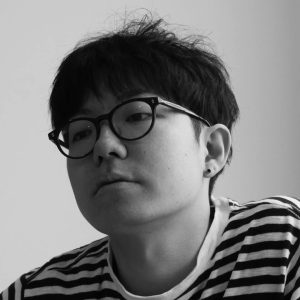
アーティスト/Artist
内海 昭子 /Akiko Utsumi
1979 年兵庫県生まれ、現在福岡市を拠点に活動。「時間の連続性を表出する風景の再構築」をテーマに、インスターレションや、映像、写真などを用いた多様な表現を行なっている。
2003年武蔵野美術大学映像学科卒業、2011年東京藝術大学美術研究科修士課程修了、2015年同博士後期課程修了。これまでKünstlerhaus Bethanien (ベルリン), A4 Art Museum (成都), SeMA Nanji Residency (ソウル), Kuandu Museum of Art (台北), 越後妻有アートトリエンナーレ(新潟)などで展示を行なっている。
Akiko Utsumi, born in Hyogo in1979, Akiko Utsumi works and lives in Fukuoka. She has worked on various medium such as installation, video and photographs. Her works deal with reconstruction of scenery that foregrounds continuity of time. She graduated from Musashino Art University in 2003. She completed her MA in 2011, and her PhD in 2015 at Tokyo University of the Arts. Her works has been exhibited at Künstlerhaus Bethanien (Berlin), A4 Art Museum (Chengdu), SeMA Nanji Residency (Seoul), Kuandu Museum of Art (Taipei), Echigo Tsumari Art Triennial (Niigata).
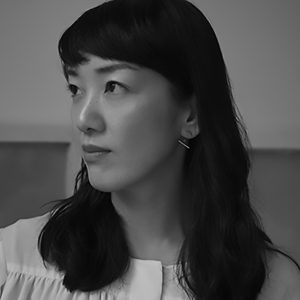
山内 光枝 /Terue Yamauchi
1982年福岡県生まれ。映像、写真、ドローイング、インスタレーションによる作品を手掛ける。2006年ロンドン大学ゴールドスミスカレッジ(イギリス)BAファインアートを卒業。2013年には済州ハンスプル海女学校(済州島・韓国)を卒業後、2015年に文化庁新進芸術家海外研究員として、2016年に国際交流基金のアジアセンター・フェローとしてフィリピンに滞在。初の長編映像作品が東京ドキュメンタリー映画祭2019で奨励賞を受賞。最近作「信号波」(2023)は日本統治下の釜山に暮らした自身の家族史に向き合うセルフドキュメンタリー。
Terue Yamauchi, born in Fukuoka in 1982, is an artist working across a wide range of media including video, sound, drawing, and mixed-media installation. She received a BA in Fine Art Studio Practice and Critical Studies from Goldsmiths College, University of London (UK). After graduating from Jeju Hansupul Haenyeo School (Korea), she stayed in the Philippines with funding from the Agency of Cultural Affairs, Japan in 2015 and the Japan Foundation in 2016. Yamauchi’s first feature-length film “Crossing Tides” received a Honorable Mention at the Tokyo Documentary Film Festival in 2019. Her most recent work Signal Wave (2023) is a self-documentary of her family history and artistic path slowly merging into the modern history of Japan and Korea. Her recent exhibitions include Waters in Asian Art (Fukuoka Asian Art Museum, Fukuoka, 2023), Spinning East Asia SeriesⅡ: A Net (Dis)entangled (Center for Heritage Arts & Textile, Hong Kong, 2022).
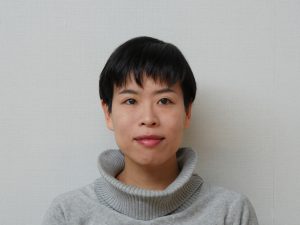
Event
2月11日開催/第15回光州ビエンナーレ日本パビリオン報告会
キュレーターである山本浩貴氏とアーティストの内海昭子氏、山内光枝氏から展覧会までの道のりや現地でのご経験等も踏まえてご報告をいただくとともに、第2部として『アジアと福岡のアートのこれまでとこれから』というテーマで山本浩貴氏、福岡アジア美術館 岩永悦子館長のトークイベントを開催。
近年のアジアの現代アートやその中で福岡がどのような役割を果たしてきたのか、アートを通じた海外との交流がどのような意義をなしているのか等を紐解いていきます。
是非ご参加ください。
日時:令和7年2月11日(火祝)16:00〜18:20
会場:Artist Cafe Fukuoka (先着40名)
料金:無料(要申込)
内容:1部 報告『第15回光州ビエンナーレ日本パビリオン』
山本浩貴氏、内海昭子氏、山内光枝氏
2部 トーク 『アジアと福岡のアートのこれまでとこれから』
山本浩貴氏、アジア美術館 岩永悦子館長
進行 山出淳也氏(Yamaide Art Office Inc.代表取締役)
申込方法:下記URLからお申し込みください。
https://forms.gle/VbVNo5Jb9frR47zz8
media
● メディア掲載一覧
・2024.10.30_CINRA_声にならない声」どう表す?光州ビエンナーレ出展の内海昭子と山内光枝、キュレーター山本浩貴に聞く
・2024.10.23_美術手帖Web版|聴く、歩く、そして放つ──「光の地」光州への応答。古川美佳評「光州ビエンナーレ2024 日本パビリオン」
・2024.9.21_ Japan times|Japan’s art world seeks connection at Gwangju Biennale
・2024.9.13_TOKYO ART BEAT|第15回光州ビエンナーレ日本パビリオンレポート。内海昭子と山内光枝が韓国でとらえ響かせる様々な“声”たち
・2024.9.12_美術手帖Web版|光州ビエンナーレ日本パビリオン、2作家が伝える歴史を紡ぐ重要性
・2024.08.15_美術手帖Web版|第15回光州ビエンナーレ、日本パビリオンに向けて高まる期待
● リリース一覧
Symposium
光州ビエンナーレ開催に先駆け、7月20日(土)にアーティストカフェ福岡を会場にシンポジウムを開催しました。
ニコラ・ブリオー氏ならびに光州ビエンナーレ財団のチェ・ドゥスゥ氏はオンライン参加にて、山本浩貴と内海昭子および山内光枝は会場から参加し、光州ビエンナーレに向けてそれぞれの立場からお話しいただきました。
多くの方にご参加いただきましたこと心より御礼申し上げます。
開催概要
日時:令和6年7月20日(土)14:00〜16:15
会場:Artist Cafe Fukuoka コミュニティスペース/オンライン配信有
定員:Artist Cafe Fukuoka コミュニティスペース 40名先着順
料金:無料
内容:
・第15回光州ビエンナーレに関する基調講演
登壇者:第15回光州ビエンナーレ
アーティスティック・ディレクター 二コラ・ブリオー (オンライン参加)※英→日通訳有
・第15回光州ビエンナーレにおけるパビリオン事業の紹介
登壇者:光州ビエンナーレ財団 展示責任者 チェ・ドゥス(オンライン参加)※英→日通訳有
・日本パビリオンについてキュレーター、アーティストから
テーマ及び作品コンセプト等を紹介
登壇者:キュレーター 山本 浩貴、アーティスト 内海 昭子、山内 光枝
【登壇者紹介】
第15回光州ビエンナーレ アーティスティック・ディレクター
ニコラ・ブリオー/Nicolas Bourriaud
ニコラ・ブリオー氏は、人間関係とコミュニケーションに基づいた芸術の実践を一貫して探求しており、著書として「関係性の美学」(1998年)、「ポストプロダクション」(2002年)、「ラディカント – グローバリゼーションの美学に向けて」(2009年)、および「Inclusions: Aesthetics of the Capitalocene(包摂:資本新世における美学)」(2020年)などが挙げられる。「関係性の美学」は、関係、媒介、参加、相互作用の概念を扱っており、現代美術における重要な概念の一つとしてしばしば引用されている。パリのパレ・ド・トーキョー創設に関わり、1999年から2006年まで共同ディレクターを務めた。その後テート・ブリテン(ロンドン)のグルベンキアン現代美術キュレーターに就任(2007-2010年)し、「テート・トリエンナーレ2009」をキュレーション。また「台北ビエンナーレ2014」、「イスタンブール・ビエンナーレ2019」など大規模な展覧会も指揮してきた。2022年には、彼が同年初めに設立した国際的なキュレーター協同組合「Radicants」の一員として、ヴェネツィアのボラーニ宮殿で「PLANET B. Climate Change and the New Sublime(惑星B, 気候変動と新しい崇高)」をキュレーションしている。
Nicolas Bourriaud has consistently explored art practices based on human relationships and communication, often intersecting with technology, media, and networks through his works such as “Relational Aesthetics” (1998), “Postproduction” (2002), “The Radicant” (2009), and “Inclusions: Aesthetics of the Capitalocene” (2020). The discourse of relational aesthetics, which deals with concepts of relationships, mediation, participation, and interaction, is often cited as one of the defining concepts in contemporary art. Bourriaud founded and co-directed the Palais de Tokyo, Paris (1999-2006) and was Gulbenkian Curator for Contemporary Art at Tate Britain in London (2007-2010). He has helmed large-scale exhibitions such as Tate Triennial 2009, Taipei Biennale 2014, and Istanbul Biennale 2019. In 2022, he curated PLANET B. Climate change and the new sublime, Palazzo Bollani, Venice for Radicants, an international curatorial cooperative which he created earlier the same year.
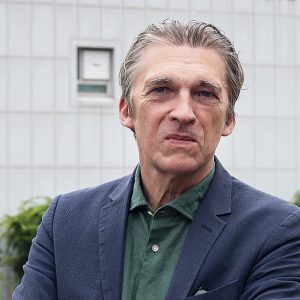
光州ビエンナーレ財団 展示責任者
チェ・ドゥス/Dusu Choi
チェ・ドゥス氏は、韓国・光州ビエンナーレ財団の展示部門における責任者として、9つの国別パビリオンが参加した「第14回光州ビエンナーレ2023 天下に水より柔弱なるは莫し」と、31のパビリオンが参加する「第15回光州ビエンナーレ2024 パンソリ – 21世紀のサウンドスケープ」を担当。また、2024年「ヴェネツィア・ビエンナーレ」の関連プログラムとして「庭 – where we become us」、2022年には光州ビエンナーレ5.18民主化運動特別展として「To where the flowers are blooming(花が咲いている方に)」(スパッツィオ・ベルレンディス、ヴェネツィア)をキュレーションしてきた。ドゥス氏は、アーティスト主導のアートフェア「Union Art Fair」およびソウルのアーティスト・ラン・スペース「Space XX」の創設者兼ディレクターであり、アジアの若手アーティストの同行に強い関心を寄せている。
Dusu Choi is the Head of exhibition department at Gwangju Biennale Foundation in Korea, where he in charge of “Soft and Weak Like Water” 14th Edition of Gwangju Biennale 2023 with 9 Participated National Pavilions and 15th Edition “Pansori a soundscape of the 21th century” with 31 Pavilions in 2024. Recently He Curated an exhibition “Madang-where we become us” as collateral event of 2024 Venice Biennale and Gwangju Biennale May Eighteen Democratization Movement Special Exhibition “To where the flowers are blooming”(2022) at Spazio Berlendis in Venice. Dusu was founder and director of artist run art fair “Union Art Fair” also artist run space “Space XX” in Seoul, interested in the young contemporary Art scene in Asia.
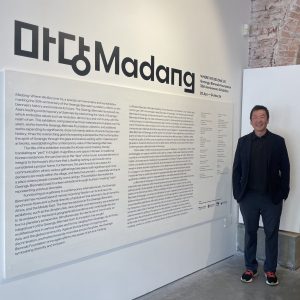
第15回光州ビエンナーレ 日本パビリオン 「私たちには(まだ)記憶すべきことがある」
制作|
事務局: Fukuoka Art Next(FaN)、Artist Cafe Fukuoka(CCC)、 Yamaide Art Office Inc.、Offsociety Inc.
展覧会制作: ArtTank Ltd.
会場設営: MIYATA ART CONSTRUCTION
広報デザイン: 後藤哲也 (Out Of Office)、Noi Moue (4:00 AM)
助成|
公益財団法人 野村財団、公益財団法人 小笠原敏晶記念財団
The 15th Gwangju Biennale Japan pavilion “We (Still) Have Things to Remember”
Organizer: Fukuoka City / Fukuoka Art Next (FaN)
Host: Gwangju Foundation
Curator: Hiroki Yamamoto
Artists: Akiko Utsumi, Terue Yamauchi
Secretariat: Fukuoka Art Next (FaN), Artist Cafe Fukuoka (CCC), Yamaide Art Office Inc., Offsociety Inc.
Exhibition Planning: ArtTank Ltd.
Venue Construction: MIYATA ART CONSTRUCTION
Graphic Design: Tetsuya Goto (Out Of Office), Noi Moue (4:00 AM)
Support: Nomura Foundation, Ogasawara Toshiaki Memorial Foundation Press
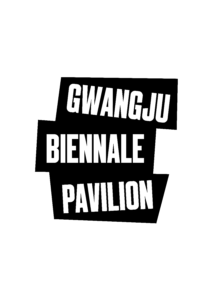
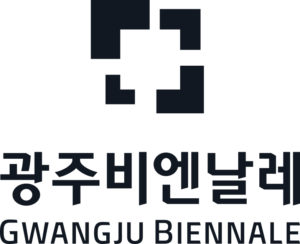

【主催】
Fukuoka Art Next 推進委員会
【問い合わせ先】
f.art.next.g@gmail.com
